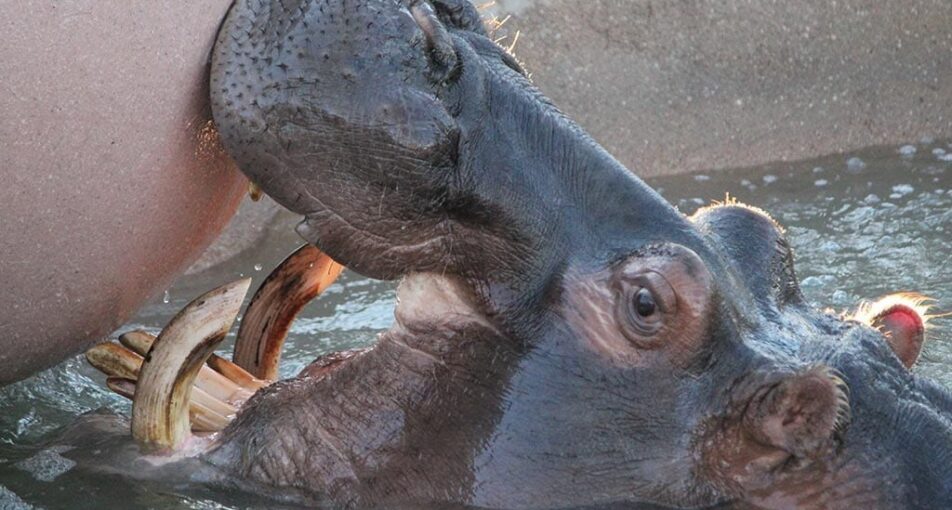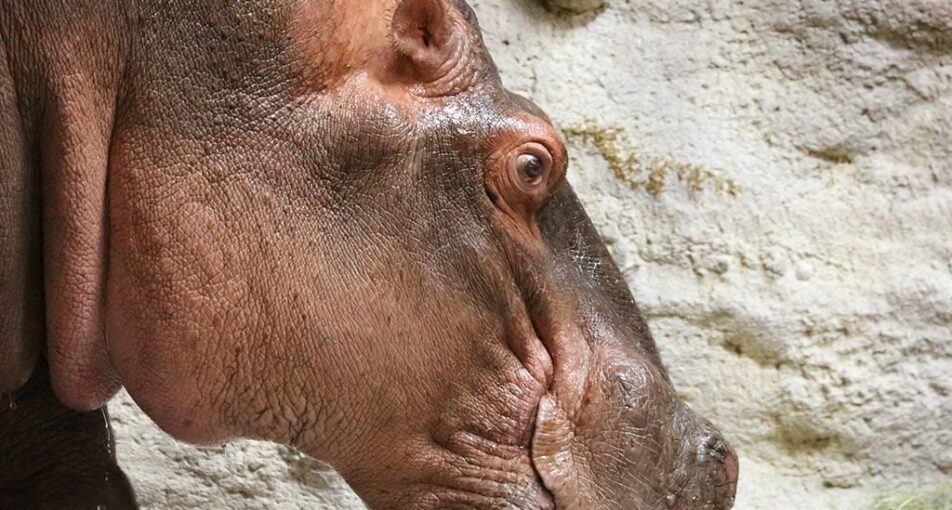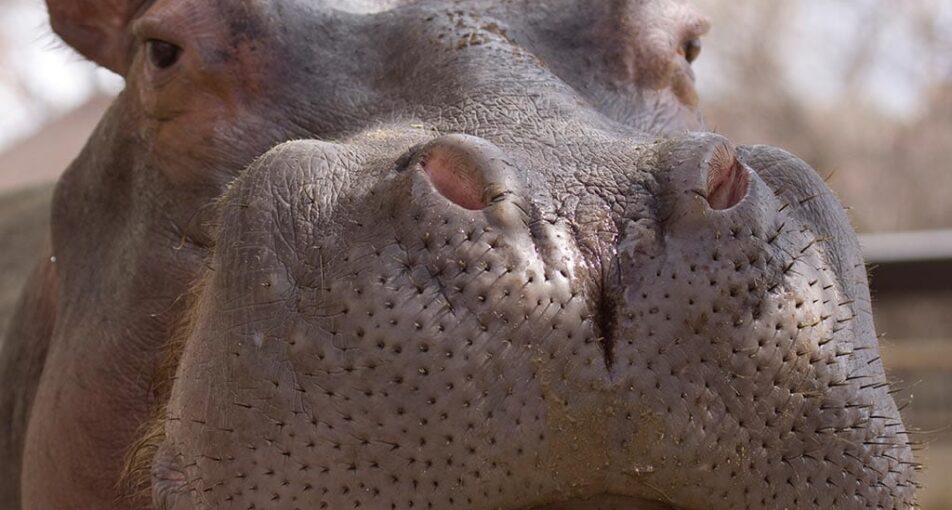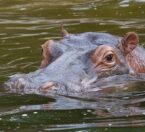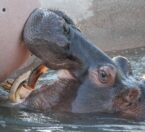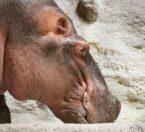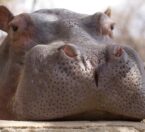Hippos practice “muck-spreading” which occurs when the tail is vigorously wagged during defecation. This action scatters feces in a wide range and may serve to mark territory or mark trails from the water to their grazing areas.
Classification
| CLASS: | Mammalia |
| ORDER: | Artiodactyla |
| FAMILY: | Hippopotamidae |
| GENUS: | Hippopotamus |
| SPECIES: | amphibius |
Habitat & Range
Swamps or grasslands that surround deep rivers and lakes.
Historically the river hippopotamus ranged through Africa south of the Sahara, however most populations have been reduced or exterminated. Most hippos are in the Nile river valley of east Africa.
Location


Hippos are abundant in protected areas and are not currently endangered. The main threat to hippos is from hunting rather than habitat loss. They are hunted for their meat and also for their large canine teeth. Since the ban on trade in elephant ivory, many smaller carvings are now made from hippo canines.
Adaptations
- Aquatic Ungulate
- With eyes, nostrils and ears located high on the head, hippos can see, hear and breathe while staying almost totally submerged. Hippos can stay completely underwater for five to six minutes. Their body weight distribution and webbed feet allow them to move easily in water. Hippos cannot sweat, so submerging in water or covering themselves with mud helps keep their bodies cool during the heat of the day.
- Hippo Sunscreen
- Despite thick skin, hippos can get sunburned. Glands in their skin secrete a reddish substance that acts like a natural sunscreen. This substance also has antibacterial properties that help injuries heal quickly. Staying in the water during the daytime also protects hippos from the sun.
- Calling All Hippos
- Hippos communicate using a resonant call – a deep bass rumbling sound that can be heard over long distances. Underwater, hippos also make clicking sounds that may announce their presence in murky waters.
- Muck-Spreading
- Hippos practice “muck-spreading” which occurs when the tail is vigorously wagged during defecation. This action scatters feces in a wide range and may serve to mark territory or mark trails from the water to their grazing areas.
Physical Description
- Hippos have a head-body length up to 12 feet (4.3 m) long.
- Females weigh about 2,800 pounds (1260 kg), males are larger weighing 3,200-6,400 pounds(1,440-2,800 kg).
- Hippos have gray to slate brown skin that is up to two inches thick. There are patches of pink on the face and stomach.
- They have a plump, bulky body with stubby legs and feet with webbed toes.
- They have a wide head with eyes, nostrils and ears set on top.
Diet
What Does It Eat?
In the wild:
Grasses
At the zoo:
Grass, hay, grain, plus vitamin and mineral supplements
What Eats It?
Crocodiles, lions, hyenas, and leopards prey on young hippos.

Social Organization
River hippos live in mixed groups of up to 15 animals. During periods of drought, larger groups form around available water sources. Adult males establish and defend narrow territories consisting of a stretch of water and the adjacent land. Males are aggressive in defending their territory and the females in their harem. Hippos use their long canine teeth as weapons, and death often results from fighting between males. Most adult male hides are covered with scars from such fighting. Although hippos are gregarious, they do not appear to form strong social bonds except for females and their calves.
Life Cycle
Females are sexually mature at four to 10 years of age and males at seven to 12 years of age. After a gestation of eight months, females give birth to a single calf in the water. Infants even suckle under water. They nurse for six to eight months, but start eating grass at about three weeks. Calves remain with their mothers up to eight years until they are full grown. Hippos live 30-40 years in the wild and up to 50 years in captivity.

